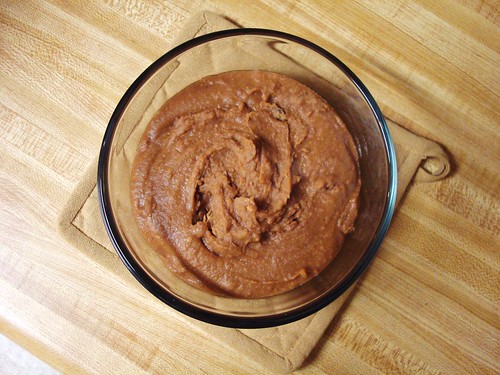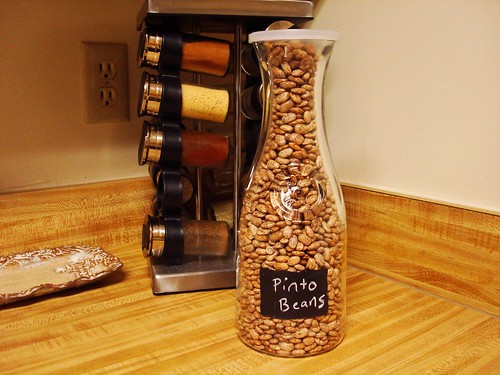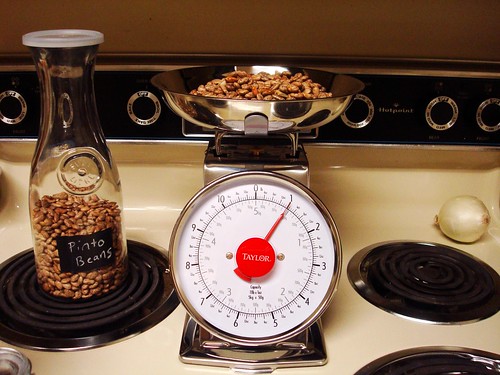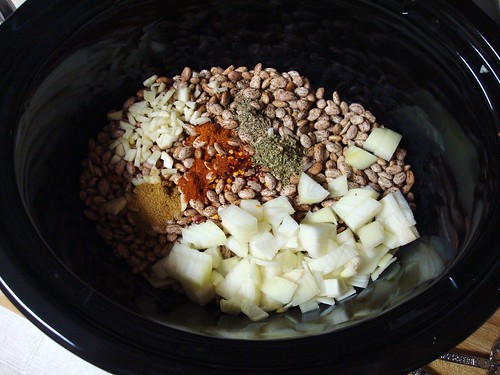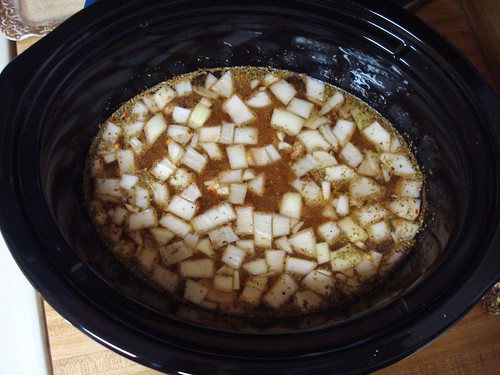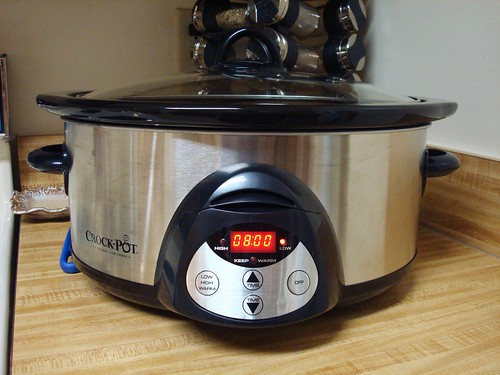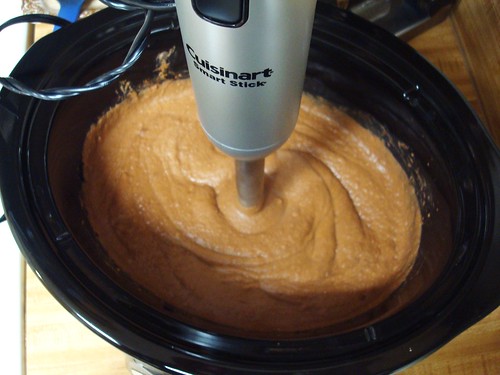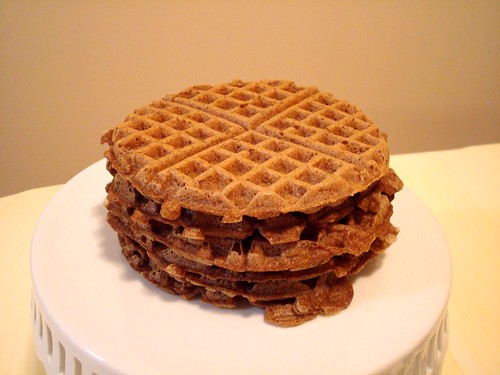On May 10, 2010, I began
my cooking blog journey and it is amazing to look back and see how my cooking
skills have matured. Three years ago, I didn’t deter away from a recipe
and I followed it to a tee. Today I don’t normally use recipes and I make
up most of what is cooked in our kitchen. It is either a VERY loosely
adapted recipe or it is made up completely from what I have on hand. I
have learned that once you understand the basic techniques, such as roasting vegetables
or browning a roast, and learn how to truly develop flavors your cooking will
go from amateur to Ina Garten. Here are a few tips to becoming a
self-taught cook:
- Use Salt. Proper
seasoning can make the difference between a superb meal and an average
meal. Use a good quality salt such as sea salt or kosher salt, but
NEVER use cheap iodized table salt. Learn how much salt certain dishes
need. I normally use a ½ - ¾ of teaspoon of sea salt per pound of
vegetables or 3 teaspoons per pound of rice. Always season each
layer of the meal and taste and adjust the seasoning once the final dish
is complete. Remember, you can always add more salt but you cannot
take it back out!
- Fat equals flavor. Don’t be afraid to use fat when you cook!
Our bodies actually need fat and it helps keep us full longer.
Forget boneless skinless chicken and boneless pork chops. They
normally don’t carry much flavor and end up tasting dry. Learn to
cook bone-in skin on meat. You will save money and your food will
taste better. Embrace healthy fats when preparing vegetables or
grains. I normally use a tablespoon of olive oil or coconut oil per
pound of vegetables. Fat helps caramelize and concentrate flavor.
- Cook with aromatics: onions,
garlic, carrots, celery and herbs.
Onions, garlic and herbs go into practically every dish I make.
Carrots and celery are often added to grains, beans, and other
dishes where I would like to increase the vegetable content or stretch the
dish to feed a few more people. Do not worry about picky taste buds.
If cooked properly, the flavor will meld into one. My husband
hates carrots and celery, but he never notices if I add it to soup, a pot
of beans, or a rice pilaf.
- Never buy instant anything. Rice, oats, potatoes, grits, coffee, etc. all
taste better in their real form. Although it may take longer to
prepare, it will be well worth your time and it will save you money.
There is no comparison between instant rice and regular rice or
instant potatoes and real potatoes. If you are always short on time,
try to plan ahead. Brown rice takes about an hour to cook and you
may not have a full hour to get dinner on the table. Cook your rice
the day before, while you are preparing dinner and eating.
- Use canned foods sparingly. The only canned foods I purchase are Muir Glen
tomatoes, Muir Glen tomato paste, and green beans. Canned tomatoes
are used mainly for marinara sauce and soup, while tomato paste is used
primarily in meatloaves or to thicken sauces. I have tested many
brands and in my opinion Muir Glen tomatoes are the best you can buy.
My husband loves southern, boiled to death, canned green beans. I
always purchase an organic variety and we eat them very rarely.
- Cook with dried beans. When given the option between using canned beans
or dried beans, always use the latter. Dried beans are superior to
canned beans because they are more flavorful, cheaper, and easier to
prepare, so do not be afraid. This leads me to point number seven…
- Learn to love your slow cooker. The slow cooker is the master of dried beans -
no soaking required. Beans prepared plain (just beans) can be tossed
in, covered with water and cooked on high for 2 ½ to 3 hours. For a
big pot of beans to come home to for supper (seasoned and ready to eat),
toss in a bag of beans, 5 ½ cups of water, aromatics (see point #3), fat
(see point #2), and cover. Cook on low for 6 hours. It will
stay on warm until you arrive home from work, which will finish cooking
the beans without turning them to mush. Remember that slow cookers
are not just for beans and can be used to make marinara sauce, soup, pot
roast, applesauce, and much more.
- Steam in the bag vegetables are
gross, especially the ones covered in sauce. Let’s be honest, steamed vegetables are not
very good and normally taste like watery mush. All vegetables taste
much better if they are roasted or sauteed in salt and fat (see points #1
& #2). If you are short on time, saute your vegetables.
This should take anywhere from 10 to 15 minutes. If you have
30 to 45 minutes, toss the vegetables in oil and salt, spread on a baking
sheet, and roast at 400 degrees. Your vegetables will taste much
better and your taste buds will thank you.
- Recipes proclaiming to take 15,
20, or 30 minutes will taste like they took 15, 20, or 30 minutes. I am not a big believer in a meal that can be
prepared from scratch in 30 minutes, but I do believe that dinner can be
on the table in 30 minutes if you plan ahead. Flavors need time to
develop and to sit and mingle among one another. If you are serving
a soup or casserole, make it the day before you plan to eat it.
While you are waiting on one meal to reheat, chop vegetables or do
other meal preparation for the next night. Over the weekend, make
items that can easily be frozen (soups, meatballs, muffins, waffles,
marinara sauce, chicken stock). Pulling items out of the freezer is
a time saver, because most of the work has already been done for you.
- Don’t be afraid to experiment
or improvise. If you
don’t have every single ingredient a recipe lists, be open to substituting
the items that you do have in your pantry or the items that are most
affordable for your budget. I have never purchased a leek, but this
has not stopped me from making a recipe that uses one. I often
substitute onions for leeks or sweet potatoes for regular potatoes.
Vinegar is still vinegar even if it is not white champagne vinegar.
It is okay to use the regular old white distilled vinegar or old fashioned
apple cider vinegar. Use whatever spices or herbs you do have in
your cabinet or growing outside in your garden. Have fun basking in
the deliciousness of your creativity!
